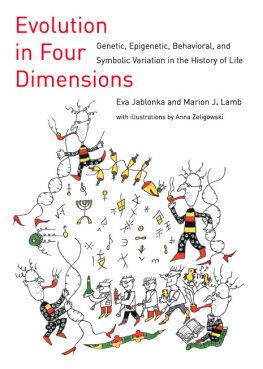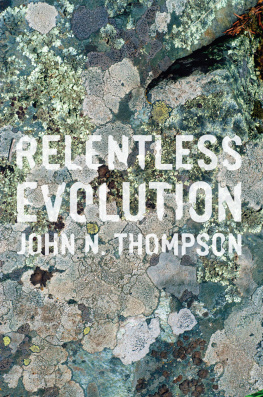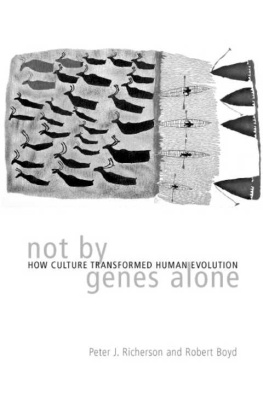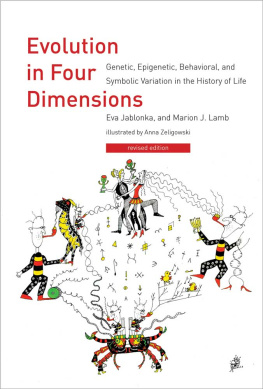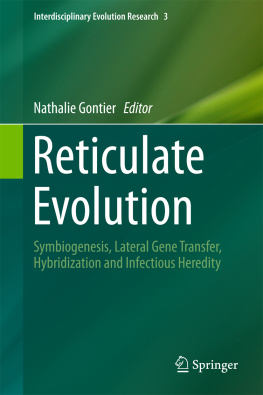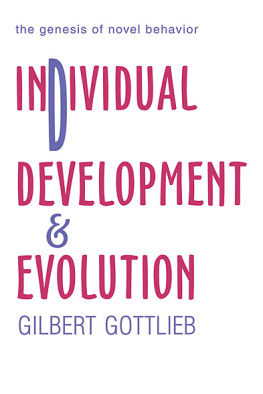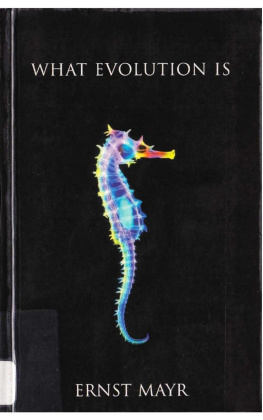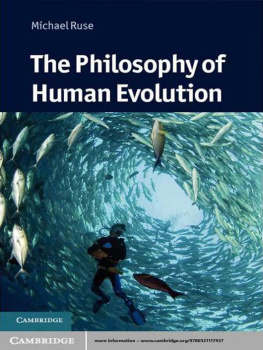o
o
o
o
o
o
o
o
o
o
o
o
Evolutionin Four Dimensions
Genetic, Epigenetic,Behavioral, and Symbolic Variation in the History of Life
EvaJablonka and Marion J. Lamb with illustrations by Anna Zeligowski
A Bradford Book TheMIT Press Cambridge, Massachusetts London, England
2005 Massachusetts Institute ofTechnology
All rights reserved. No part of this bookmay be reproduced in any form by any electronic or mechanical means (includingphotocopying, recording, or information storage and retrieval) withoutpermission in writing from the publisher.
MIT Press books may be purchased atspecial quantity discounts for business or sales promotional use. For information,please email special_sales@mitpress.mit.edu or write to Special SalesDepartment, The MIT Press, 5 Cambridge Center, Cambridge, MA 02142.
This book was set in Stone Sans and StoneSerif by SNP Best-set Typesetter Ltd., Hong Kong. Printed and bound in theUnited States of America.
Library of CongressCataloging-in-Publication Data
Jablonka, Eva. Evolution in fourdimensions : genetic, epigenetic, behavioral, and symbolic variation in thehistory of life / by Eva Jablonka and Marion J. Lamb with illustrations by AnnaZeligowski.
p. cm.(Life and mind) Includes bibliographical references (p.). ISBN 0-262-10107-6 (alk. paper)
1. Evolution (Biology) I. Lamb, Marion J.II. Title. III. Series.
QH366.2.J322 2005 576.8dc22 2004058193
10987654321
Prologue
The content and formatof this book are a little unusual, so we want to begin by explaining what it isabout and how it is organized. Our basic claim is that biological thinkingabout heredity and evolution is undergoing a revolutionary change. What isemerging is a new synthesis, which challenges the gene-centered version ofneo-Darwinism that has dominated biological thought for the last fifty years.
The conceptual changes that aretaking place are based on knowledge from almost all branches of biology, butour focus in this book will be on heredity. We will be arguing that
there is more to heredity than genes;
some hereditary variations are nonrandom in origin;
some acquired information is inherited;
evolutionary change can result from instruction as well asselection.
These statements may soundheretical to anyone who has been taught the usual version of Darwins theory ofevolution, which is that adaptation occurs through natural selection of chancegenetic variations. Nevertheless, they are firmly grounded on new data as wellas on new ideas. Molecular biology has shown that many of the old assumptionsabout the genetic system, which is the basis of present-day neo-Darwiniantheory, are incorrect. It has also shown that cells can transmit information todaughter cells through non-DNA (epigenetic) inheritance. This means that allorganisms have at least two systems of heredity. In addition, many animalstransmit information to others by behavioral means, which gives them a thirdheredity system. And we humans have a fourth, because symbol-based inheritance,particularly language, plays a substantial role in our evolution. It istherefore quite wrong to think about heredity and evolution solely in terms ofthe genetic system. Epigenetic, behavioral, and symbolic inheritance alsoprovide variation on which natural selection can act.
Whenall four inheritance systems and the interactions between them are taken intoaccount, a very different view of Darwinian evolution emerges. It is a viewthat may relieve the frustration that many people feel with the prevalentgene-centered approach, because it is no longer necessary to attribute theadaptive evolution of every biological structure and activity, including humanbehavior, to the selection of chance genetic variations that are blind tofunction. When all types of hereditary variation are considered, it becomesclear that induced and acquired changes also play a role in evolution. Byadopting a four-dimensional perspective, it is possible to construct a farricher and more sophisticated theory of evolution, where the gene is not thesole focus of natural selection.
Wehave divided the book into three parts, each of which has a short introduction.Part I is devoted to the first dimension of heredity and evolution, the geneticsystem. In chapter 1 we outline the history of Darwins theory and show how itbecame so gene-centered. Chapter 2 describes how molecular biology has changedthe way biologists see the relation between genes and characters. In chapter 3we examine the evidence suggesting that not all genetic changes should be seenas random, chance events.
PartII deals with the other dimensions of heredity. Chapter 4 is about the seconddimension, epigenetic inheritance, through which different cells with identicalDNA are able to transmit their characteristics to daughter cells. In chapter 5we explore the ways in which animals transmit their behavior and preferencesthrough social learning, which is the third dimension. We deal with the fourthdimension in chapter 6, which describes how information is transmitted throughlanguage and other forms of symbolic communication.
Inpart III of the book we put Humpty Dumpty together again. Having looked at eachof the four dimensions of heredity more or less in isolation, we bring themtogether by showing how, in the long term, the systems of inheritance depend oneach other and interact (chapters 7 and 8). In chapter 9 we discuss how theymay have originated and how they have guided evolutionary history. Finally, inchapter 10, we summarize our position and put it into a wider perspective byconsidering some of the philosophical implications of the four-dimensionalview, as well as some political and ethical issues.
Eachchapter ends with a dialogue, and the whole of chapter 10 takes this form. Weuse these dialogues as a device to enable us to reiterate some of the tricky pointsin our arguments, and to highlight areas of uncertainty and issues that arecontentious. The participants in the dialogues are M.E. (who represents theauthors, Marion Lamb and Eva Jablonka) and someone

Ifcha Mistabra.
who could have been called thedevils advocate, but who, in order to avoid the negative connotations of thatterm, we have chosen to call Ifcha Mistabra (I.M. for short). Ifcha Mistabrais Aramaic for the opposite conjecture. It is a term that embodies theargumentative dialogue style used in the Talmud, in which arguments arecountered and contradicted, and through this dialectic a better understandingof the subject is reached. The book can be read without the dialogues, but wethink that readers may find them interesting and helpful, because they reflectmany of the questions and concerns that our students and others have raisedwhen we have spoken about our evolutionary views.
Wehope that the book can be read not only by professional scientists but also bythe many people who are interested in biological ideas, and are fascinated (andsometimes worried) by the current ways of thinking about biology, especiallyabout modern genetics. To make it as reader-friendly as possible withoutcompromising the science, we have relegated the more specialized material andthe sources of information to endnotes, which are organized on a page-by-pagebasis. We use many examples and thought experiments to try to make our ideasclear, but we recognize that some chapters (particularly chapters 3, 4, and 7)may be a bit heavy going for nonbiologists. These chapters include quite a lotof molecular detail, which we need in order to make our case to skepticalbiologists. Readers who do not wish to delve into the molecular nitty-grittycan skip the more technical parts of these chapters, and read the generaldiscussions, although if they do so they will have to trust our intellectualhonesty and judgment, rather than evaluate the data for themselves.

